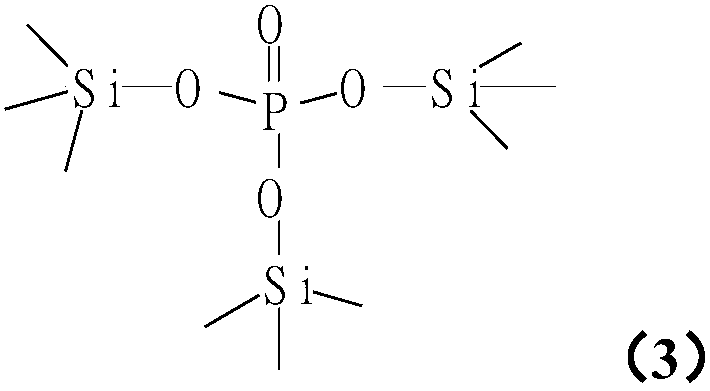Electrolyte for high-voltage lithium ion battery
A lithium-ion battery and electrolyte technology, applied in the field of electrolyte, can solve the problems of capacity attenuation of lithium-ion battery, easy oxidation reaction of electrolyte, etc.
- Summary
- Abstract
- Description
- Claims
- Application Information
AI Technical Summary
Problems solved by technology
Method used
Image
Examples
preparation example Construction
[0028] The preparation method of the present invention will be further described in detail in conjunction with specific examples below. It should be understood that the following examples are only for illustrating and explaining the present invention, and should not be construed as limiting the protection scope of the present invention. All technologies realized based on the above contents of the present invention are covered within the scope of protection intended by the present invention.
[0029] The experimental methods used in the following examples are conventional methods unless otherwise specified; the reagents and materials used in the following examples can be obtained from commercial sources unless otherwise specified.
[0030] In the description of the present invention, it should be noted that the terms "first", "second" and "third" are used for description purposes only, and do not indicate or imply relative importance.
Embodiment 1
[0032] Electrolyte preparation: In an argon-filled glove box (moisture 6 Electrolyte solution, then sequentially add 0.2wt% dimethyl sulfonyl ethane, 0.5wt% lithium difluorophosphate and 1.0wt% tris(trimethylsilyl) phosphate, stir to obtain the lithium ion battery electrolysis of embodiment 1 liquid.
[0033] Preparation of the positive electrode sheet: the positive electrode active material nickel-cobalt-manganese ternary material LiNi 0.5 co 0.2 mn 0.3 o 2 , the conductive agent acetylene black, and the binder polyvinylidene fluoride (PVDF) are fully stirred and mixed in the N-methylpyrrolidone system according to the mass ratio of 95:3:2, and coated on the positive electrode current collector Al foil. The positive electrode sheet was obtained after dry cold pressing.
[0034] Preparation of negative electrode sheet: Negative electrode active material graphite, conductive agent acetylene black, binder styrene-butadiene rubber (SBR), thickener sodium carboxymethyl cellulo...
Embodiment 2
[0038] All the other steps are the same as in Example 1, the only difference is that the preparation of electrolyte is different:
[0039] Electrolyte preparation: In an argon-filled glove box (moisture 6 Electrolyte, then successively add 0.5wt% dimethyl sulfonyl methane, 1.0wt% lithium difluorophosphate and 1.0wt% tris (trimethylsilyl) phosphate, stir to obtain the lithium ion battery electrolyte of embodiment 2 .
PUM
 Login to View More
Login to View More Abstract
Description
Claims
Application Information
 Login to View More
Login to View More - R&D Engineer
- R&D Manager
- IP Professional
- Industry Leading Data Capabilities
- Powerful AI technology
- Patent DNA Extraction
Browse by: Latest US Patents, China's latest patents, Technical Efficacy Thesaurus, Application Domain, Technology Topic, Popular Technical Reports.
© 2024 PatSnap. All rights reserved.Legal|Privacy policy|Modern Slavery Act Transparency Statement|Sitemap|About US| Contact US: help@patsnap.com










